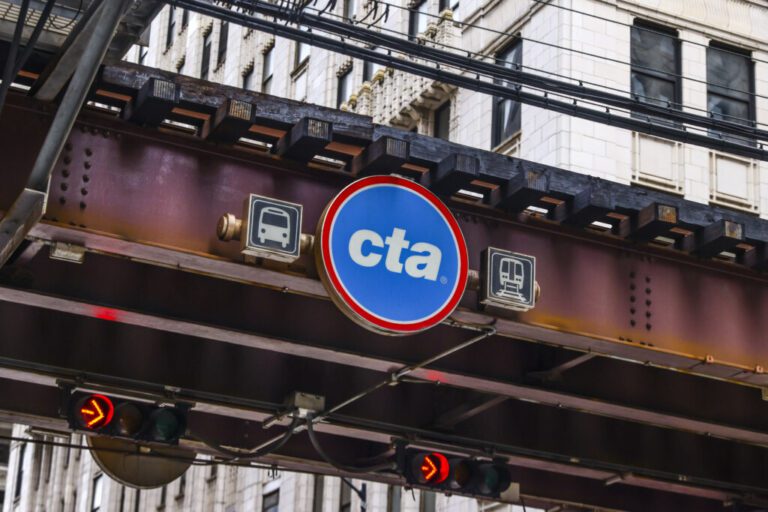Chicago Transit Authority Green Line riders were the most likely to be victims of crime during the 12 months ending in September. The most dangerous CTA stops had nearly 7 crimes per 100,000 riders compared to 1.3 systemwide.
Riders on the Chicago Transit Authority's Green Line were most likely to be the victim of a crime while waiting at the station in the 12 months through September, according to Chicago Police Department data.
The worst stop on the line, or anywhere on the CTA, was at 63rd and Ashland in the West Englewood neighborhood. Nearly 7 out of every 100,000 trips result in a crime.
About 1.9 out of every 100,000 trips starting at a CTA Green Line station or platform ended in a crime between October 1, 2023 and September 30, 2024.
Red Line riders were the second most likely to be the victim of a crime at a CTA station, with nearly 1.7 out of every 100,000 trips ending in a crime.
Citywide, about 1.3 out of every 100,000 trips that begin at a CTA station or platform end in crime. The most common crime was battery. Second were deceptive practices, such as bait-and-switch or counterfeiting schemes.
Battery reports increased more at CTA stations in raw numbers compared to the same 12 months in the previous year.
Meanwhile, drug-related cases saw the largest percent increase during that period. The Criminal Police Department identified 121 cases of individuals possessing or selling drugs at the centres, 47 more than in the previous 12-month period.
Overall, the number of crimes committed at CTA centers has reached its highest level since the start of the pandemic, with residents reporting 1,356 crimes as of September.
About 45% of all crimes reported at CTA centers resulted in an arrest, the second highest rate in the past decade after the period between October 2022 and September 2023.
While the annual number of riders on CTA trains has nearly doubled from a two-decade low of 55.8 million during the pandemic to 106.7 million as of September, it is still roughly 60% below pre-pandemic levels.
The city can reduce serious crime on public transportation and encourage more riders to return to the CTA by reducing low-level crimes such as disorderly conduct and fare evasion and increasing police presence at stations.
Other cities have already begun to follow this approach. Washington, D.C., Izzat A 19% Decreased crime rates on public transportation to enforce evasion measures and increase police presence.
Research from Manhattan Institute also It shows police deterring, preventing, or detecting more serious crimes through routine arrests, citations, and stops for non-violent crimes such as fare evasion.
When Chicagoans feel safer, CTA ridership could approach pre-pandemic levels. As more Chicagoans use public transportation, the return of the pre-pandemic “safety in numbers” will make Chicago safer for everyone.
